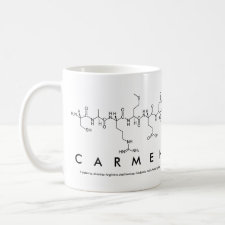
Authors: Yañez F, Chauhan A, Concheiro A, Alvarez-Lorenzo C
Article Title: Timolol-imprinted soft contact lenses: Influence of the template: Functional monomer ratio and the hydrogel thickness.
Publication date: 2011
Journal: Journal of Applied Polymer Science
Volume: 122
Issue: (2)
Page numbers: 1333-1340.
DOI: 10.1002/app.34022
Abstract: Abstract: Isothermal titration calorimetry (ITC) was used to identify the optimal timolol:functional monomer ratio for preparing soft contact lenses (SCLs) able to sustain drug release. ITC profiles revealed that each timolol molecule required six to eight acrylic acid (AAc) monomers to saturate the binding and that these ratios could be the most suitable for creating imprinted cavities. Various poly(hydroxyethyl methacrylate-co-AAc) hydrogels 0.2 and 0.9 mm thick were prepared with timolol:AAc molar ratios ranging from 1 : 6 to 1 : 32 and also in the absence of timolol. The hydrogels were reloaded with timolol by immersion in 0.04, 0.06, 0.08, and 0.10 mM drug solutions. Both imprinted and nonimprinted hydrogels showed a high affinity for the drug because of the presence of AAc. Nevertheless, the 1 : 6 and 1 : 8 imprinted hydrogels loaded less timolol but sustained the release better than the other hydrogels. These differences were explained in terms of the different arrangement of the functional monomers along the network. The imprinting effect was more noticeable in the case of the thinnest hydrogels, where the contribution of the diffusion path to the release rate was smaller. The results obtained prove the interest of ITC for the rational design of drug-imprinted networks to be used as medicated SCLs. © 2011 Wiley Periodicals, Inc. J Appl Polym Sci, 2011
Template and target information: timolol
Author keywords: drug delivery systems, hydrogels, molecular imprinting



Join the Society for Molecular Imprinting

New items RSS feed
Sign-up for e-mail updates:
Choose between receiving an occasional newsletter or more frequent e-mail alerts.
Click here to go to the sign-up page.
Is your name elemental or peptidic? Enter your name and find out by clicking either of the buttons below!
Other products you may like:
 MIPdatabase
MIPdatabase









